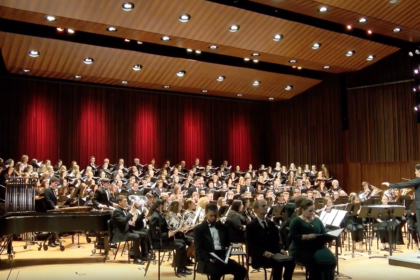“In a Nutshell.” Why did we pick that title? The colloquial phrase means “in a few words, or in a very brief form”, and, when the phrase first entered the English language, referred to “anything that had been compressed, later being applied to written or spoken words.’’
Percy Grainger’s Suite “In a Nutshell” is a four movement Suite first performed and published in 1916 that contains many of the elements of Percy Grainger’s compositional style, all compressed into a 20 minute work (hence, “In a Nutshell”). The piece, identified as “For Orchestra, Piano and Deagan Percussion Instruments” serves as a laboratory for a whole set of Grainger experiments in composition, in orchestration, and in the juxtaposition of jarringly different musical styles. The “Deagan Percussion Instruments” dedication grows out of Grainger’s close friendship and professional association with the Deagan family of Chicago, inventors and manufacturers of a vast array of mallet played percussion instruments – what Grainger would come to call the “tuneful percussion.”
One of the unusual instruments used in “In a Nutshell” are the “staff bells”, designed by Grainger and executed by Deagan. It is a rack of up to 4 octaves of handbells removed from their handles, hung in a keyboard style configuration, and played with mallets. Deagan even attached small resonators like those used on a xylophone to amplify the sound of the instrument.
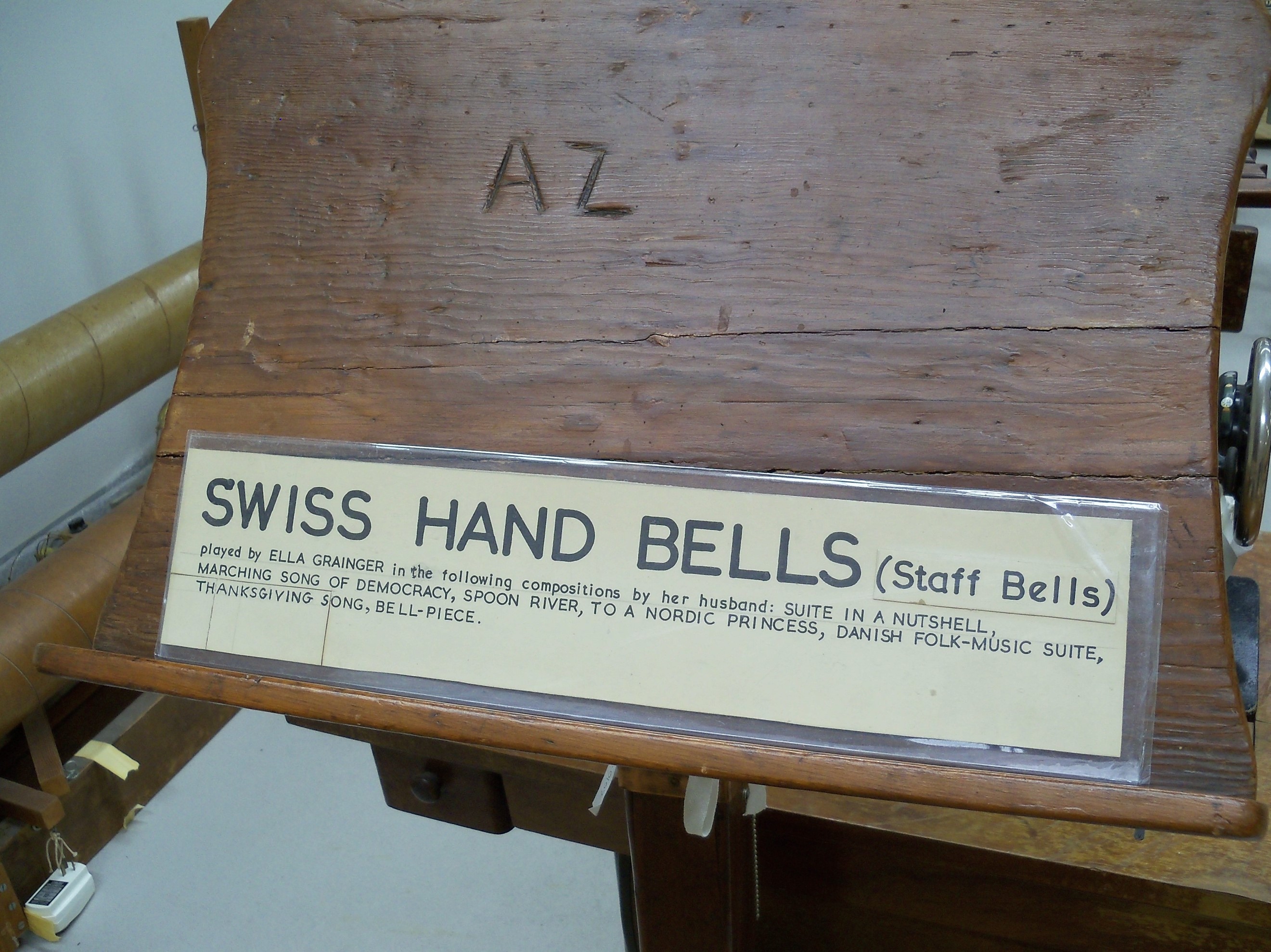
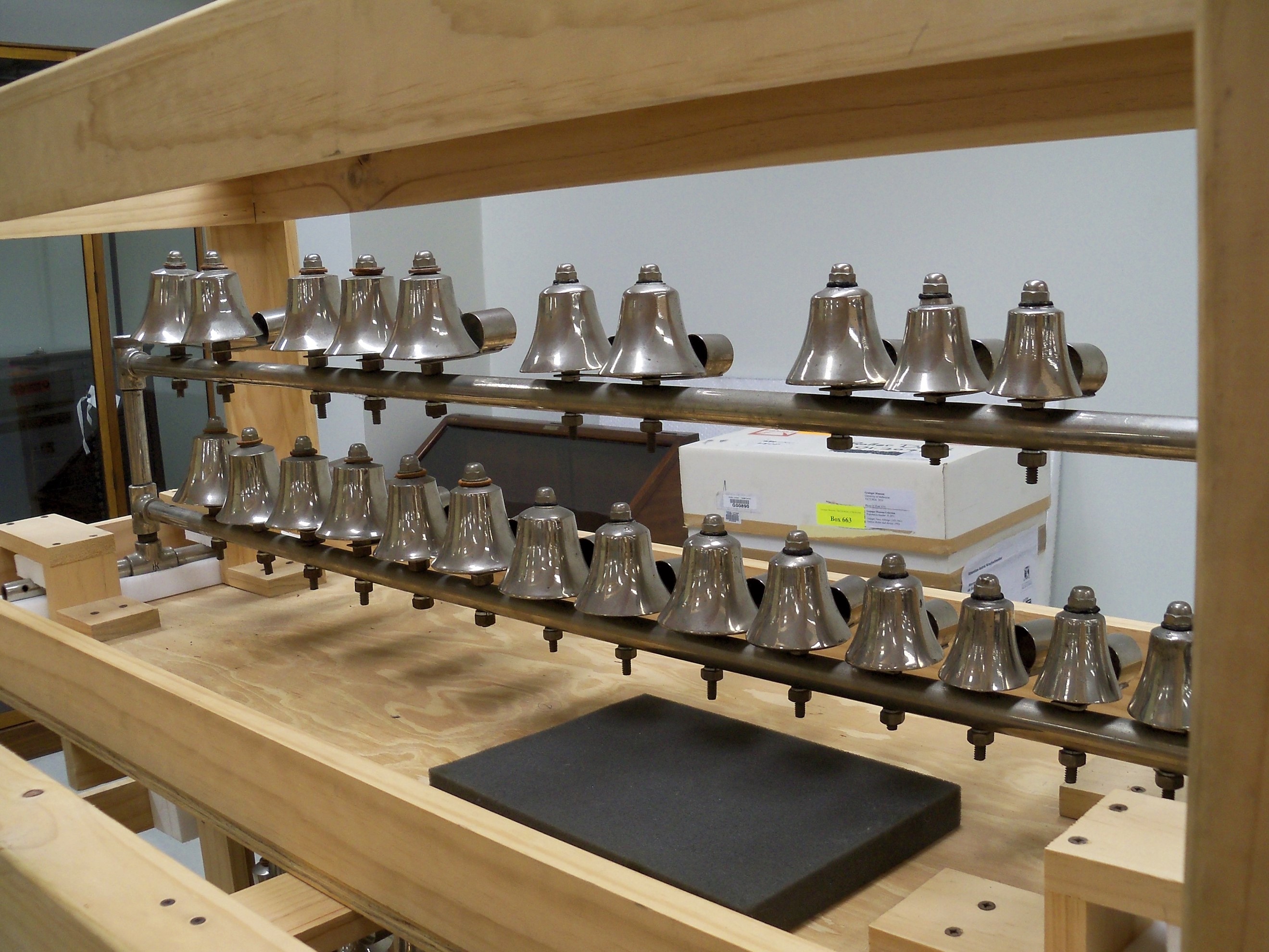
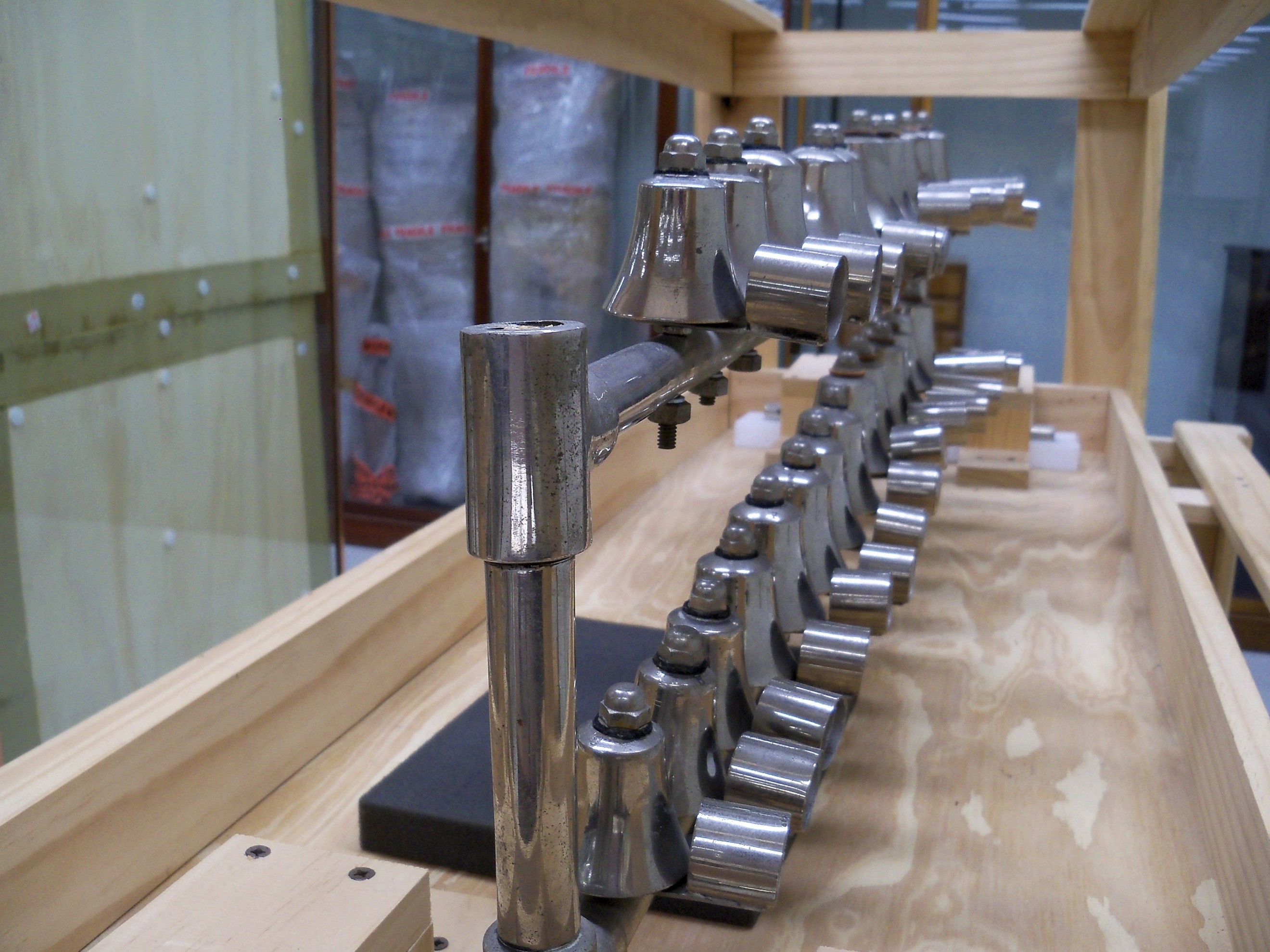
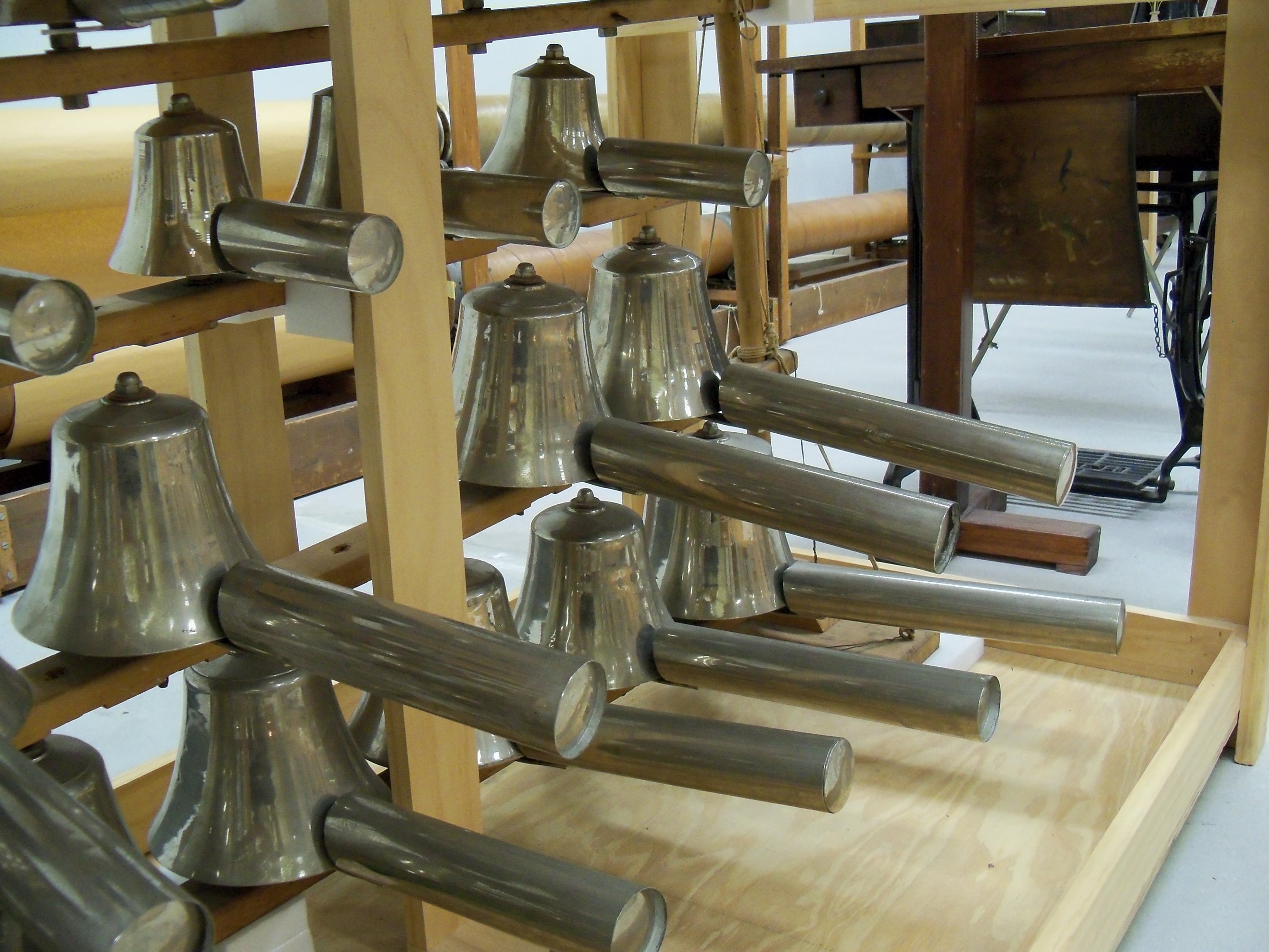
The first movement of the Suite, “Arrival Platform Humlet” was originally conceived for solo (or massed) viola(s), but was re-organized by Grainger into an incredibly colorful piece for full orchestra. A striking aspect of the piece is the complete absence of chords. The texture is unison or octaves, with an occasional open fifth.
The second movement, “Gay but Wistful” is an English music hall tune – seemingly superficial and light, but tinged with an air of sadness or regret. Written shortly after Grainger left England for America, it may reflect his wistfulness for his former life in London.
The third movement “Pastoral” is, to quote Wilfred Mellers, “as ‘serious’ a piece as Grainger ever created.” It is a piece that starts in the countryside with a lilting single-line solo on the oboe – that favorite countryside-evoking orchestral instrument – but soon evolves into music of psychological depth and dark subtext. Charles Ives would have been impressed.
The final movement of the Suite wrenches us back from disturbing darkness to the Australian Outback with Grainger’s athletic and well-known-to-bandsmen “The Gum-Sucker’s” March.
For a Grainger admirer with associations mostly developed through the performance of his music for the concert band, Suite “In a Nutshell” is a revealing look at a broad swath of Percy Grainger’s compositional style in a compressed setting (hence, again, “In a Nutshell”).
(Complete Suite “In a Nutshell”, BBC Philharmonic Orchestra conducted by Richard Hickox.)
That “wraps it up” for this inaugural blog post for “In a Nutshell”. Please join us next time for “Percy Grainger’s Free-Music, Part 1.”
Visit us at www.auxarcsmusic.com for information on our publications, andwhile you’re there, join our Mailing List https://auxarcsmusic.us17.list-manage.com/subscribe?u=1cc0438acb313839544338392&id=79612b955d
The catalog of Aux Arcs Music is available from C. Alan Publications at http://c-alanpublications.com/band/aux-arcs-music/


